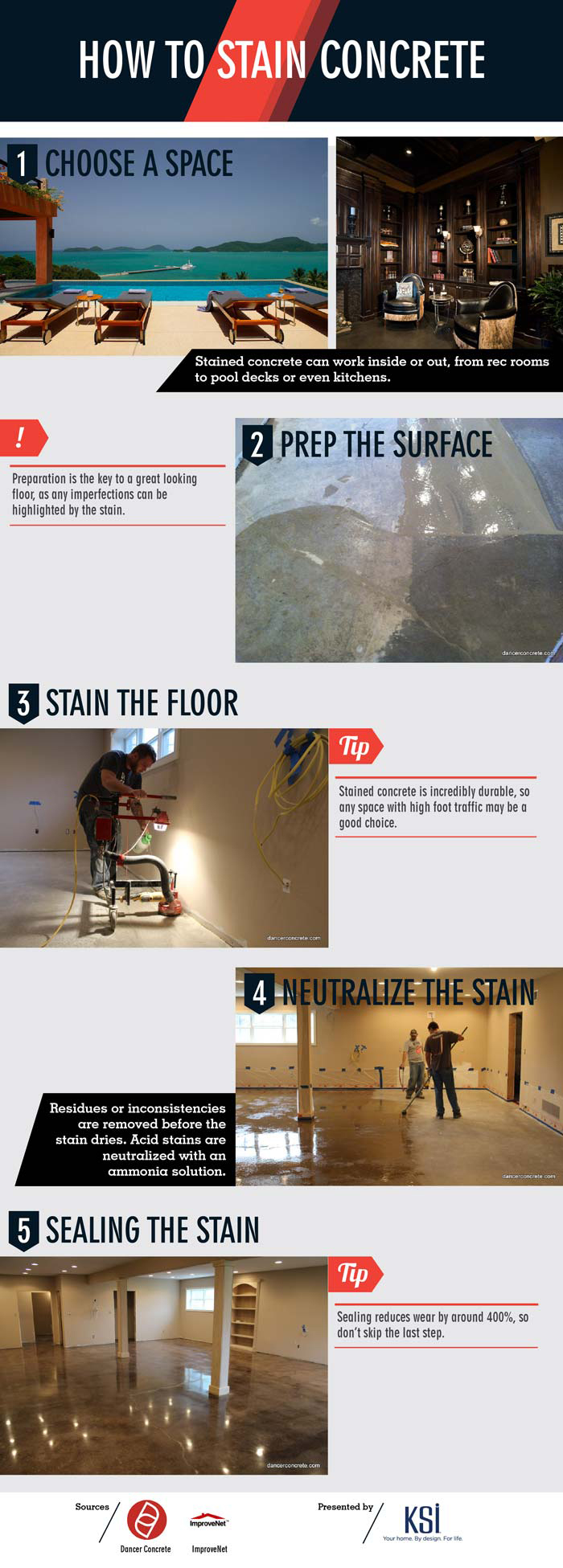A Guide to Concrete Floor Staining
So you’ve moved into a new home with concrete floors. You might not have thought to add concrete floors yourself, but there are actually plenty of good reasons why homeowners are choosing this type of flooring material. Concrete is incredibly durable and is also considered green, thanks to its efficient use of raw materials, ability to absorb and retain heat, and long life span. And if you don’t like concrete’s color, you can hire a professional to stain it for you.
It is possible to stain your own concrete floor, but because there’s a fair amount of room for error, it’s best to work with a contractor who has experience staining concrete floors. It’s also a good idea to understand the concrete floor staining process so that you can ensure you’re hiring the best professional for the job and that they’re doing everything they can to make your floor look great and last a long time. Here’s what your concrete floor contractor should do when staining your floor.
Prepping the Surface
It’s essential that you start with a clean surface, as staining will highlight any imperfections. During the cleaning process, your professional should take note of any cracks or discolored patches that will affect the appearance of your floor once it’s been stained. If there are cracks, you may want to have the professional disguise them with an overlay—or you may choose to leave them to add character. Discoloration may be able to be disguised based on the type of stain that you choose.

Choosing the Stain
One of the most important decisions you’ll have to make during the staining process is: acid or acrylic? Acid stains are commonly used in homes because they do a better job of covering up imperfections than acrylic stains, but some homeowners prefer acrylic because it doesn’t contain any solvents or acids and it comes in a wider range of colors. If you’re unsure what will be best for your floor, ask your contractor for their recommendation.
Applying and Neutralizing the Stain
Your professional should test your chosen stain on a small, inconspicuous patch of the floor to make sure the color looks the way you anticipated. Once you’ve approved of the test patch, the contractor will apply the stain to the whole floor using a plastic pump sprayer, mops, rollers, and squeegees. If you’ve chosen an acid spray, the professional will need to neutralize it by spraying it with a mixture of ammonia and water. He or she will then need to let the floor dry before cleaning it and vacuuming up any extra water.
Sealing the Stain
Finally, your professional will ensure that your stained floor is durable and dust-proof by sealing it. This involves using a densifier to penetrate the concrete and increase its abrasion resistance and then applying a stain guard to add extra floor and prevent stains. Not only will this part of the process extend your floor’s life span, it will also make it easier for you to maintain simply by sweeping and occasionally mopping.
If you have more questions about the concrete staining process, don’t hesitate to ask questions of the contractor you’re thinking about hiring, and check out the concrete floor staining guide from KSI Kitchens to learn more.









